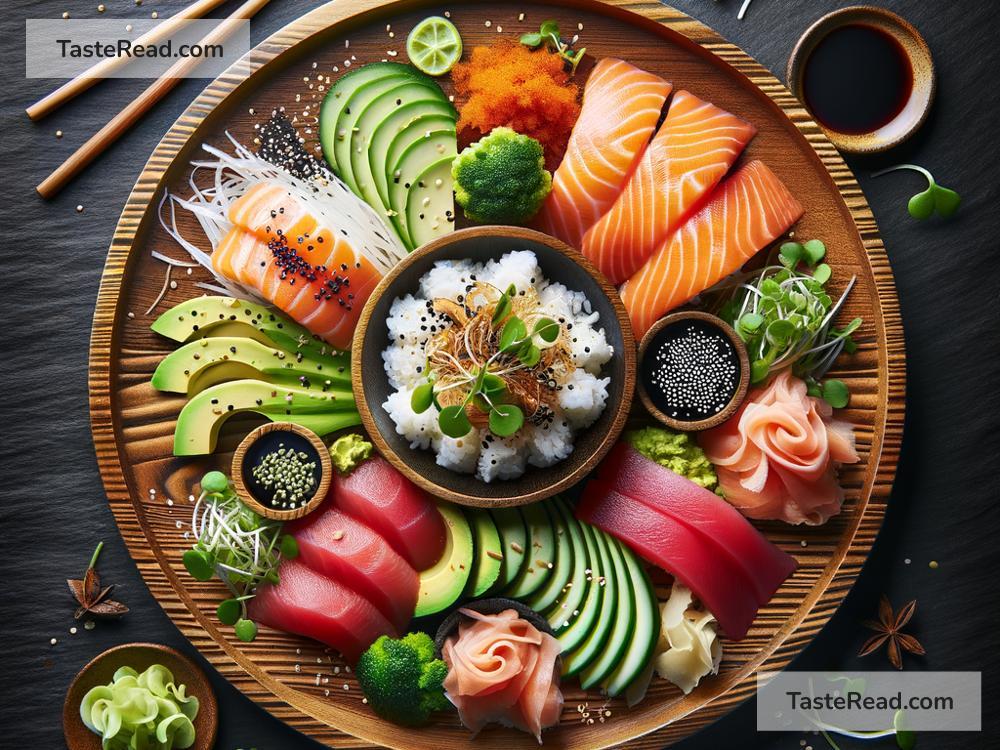Indulging in the Modern Art of Deconstructed Sushi Innovations
Sushi is a beloved dish enjoyed by millions around the world. Traditionally, it’s made with rice, raw fish, seaweed, and other fresh ingredients, carefully assembled into rolls or nigiri. But as food evolves, so do its presentations. One exciting trend gaining popularity is deconstructed sushi. This innovative approach takes the core elements of sushi and reimagines them in new and unexpected ways. Let’s explore the fascinating world of deconstructed sushi and how it’s transforming the dining experience.
What Is Deconstructed Sushi?
Deconstructed sushi is all about taking apart the traditional components of sushi and presenting them in a different format. Instead of assembling the ingredients into a classic roll or piece, chefs experiment with creative presentations while keeping the essence of the dish intact. Think of it as sushi, but outside the box.
The concept is appealing because it blends art with cuisine. By deconstructing sushi, chefs have greater freedom to create unique textures, flavors, and visual arrangements. Whether served as a poke bowl, bite-sized appetizers, or layered creations, these modern versions offer diners a fresh perspective on classic sushi.
Why Is Deconstructed Sushi So Popular?
Deconstructed sushi has become a hit for several reasons:
-
Creativity and Innovation: Sushi has been around for centuries, and while traditional methods are cherished, deconstructed sushi brings a modern twist. It allows chefs to express their creativity and surprise diners with a new take on familiar flavors.
-
Accessibility: Not everyone feels comfortable eating raw fish or handling chopsticks. Deconstructed sushi can make the dish more approachable for people new to Japanese cuisine. For example, a sushi salad or sushi taco might feel less intimidating than a finely rolled maki.
-
Customization: One of the biggest appeals of deconstructed sushi is its versatility. Diners can mix and match ingredients based on personal preferences. Don’t like seaweed? Skip it. Prefer cooked seafood over raw fish? No problem. The deconstructed approach caters to individual tastes.
-
Visual Appeal: Presentation matters. Deconstructed sushi often looks like edible art, with ingredients beautifully arranged on plates or in bowls. Social media has amplified its popularity, as people love sharing photos of colorful, eye-catching dishes.
Key Components of Deconstructed Sushi
While the format changes, the essential ingredients of sushi remain the same. Here are the typical components used in deconstructed creations:
-
Rice: Sushi rice is the foundation. It’s often seasoned with vinegar, sugar, and salt to give it its signature taste. In deconstructed sushi, rice might be served as a bed for toppings, layered in a bowl, or even fried into crispy clusters.
-
Fish and Seafood: Fresh fish (like salmon, tuna, and shrimp) is a staple. Deconstructed versions may feature raw slices, seared pieces, or even fully cooked options to accommodate different palates.
-
Vegetables and Fruits: Common ingredients include cucumber, avocado, edamame, and radish. Fruits, like mango or pineapple, are increasingly used for a sweet contrast.
-
Seaweed: Nori sheets are often replaced with seaweed flakes or served on the side for dipping.
-
Sauces and Condiments: Soy sauce, wasabi, spicy mayo, eel sauce, and ponzu are essential. In the deconstructed style, sauces might be artistically drizzled or served separately for dipping.
-
Toppings and Garnishes: Crunchy elements like sesame seeds, tempura flakes, or crispy fried onions add texture. Microgreens and edible flowers enhance the visual appeal.
Popular Deconstructed Sushi Dishes
Here are some innovative takes on deconstructed sushi you might encounter:
1. Sushi Bowls
Sushi bowls (or poke bowls) are one of the most popular forms of deconstructed sushi. They feature a base of sushi rice topped with fish, veggies, and garnishes. Everything is artfully arranged, allowing diners to mix the ingredients as they eat. It’s like eating sushi, but without the rolling.
2. Sushi Tacos
Sushi tacos use crispy seaweed or tempura shells to hold sushi ingredients. Filled with fish, avocado, and sauces, they’re perfect for snacking or sharing. The handheld format also adds a fun element to the dining experience.
3. Open-Faced Sushi
Instead of wrapping the ingredients, this version layers them on flat surfaces like crackers, rice cakes, or even cucumber slices. It’s an elegant appetizer that showcases the vibrant colors and textures of sushi.
4. Sushi Stacks
Sushi stacks are tall, layered creations made with sushi rice, fish, avocado, and other ingredients. They’re served in molds that give them a neat, cylindrical shape. Cutting into a sushi stack reveals all the layers in one satisfying bite.
5. Sushi Salad
Sushi salads combine sushi ingredients with leafy greens to create a refreshing dish. Fish, avocado, and sesame seeds are mixed with a light dressing, resulting in a healthier take on sushi.
How to Make Your Own Deconstructed Sushi
Creating deconstructed sushi at home can be a fun and rewarding activity. Here’s a simple guide:
- Cook sushi rice and season it with vinegar, sugar, and salt.
- Prep your fish (raw or cooked) and slice it into bite-sized pieces.
- Chop fresh vegetables like cucumber, avocado, and carrots.
- Arrange everything into a bowl, stack, or on a flat surface.
- Add sauces and garnishes—drizzle soy sauce, sprinkle sesame seeds, or dollop wasabi.
- Enjoy your creation with a fork, spoon, or chopsticks.
Conclusion
Deconstructed sushi is more than just food—it’s an experience. It’s modern, fun, and allows both chefs and diners to play with traditional ingredients in new, creative ways. Whether you try it in a trendy restaurant or experiment with it at home, this innovative approach is a great way to enjoy sushi’s delicious flavors while indulging in culinary artistry. So, don’t hesitate to dive into the world of deconstructed sushi—it’s sushi reinvented!


